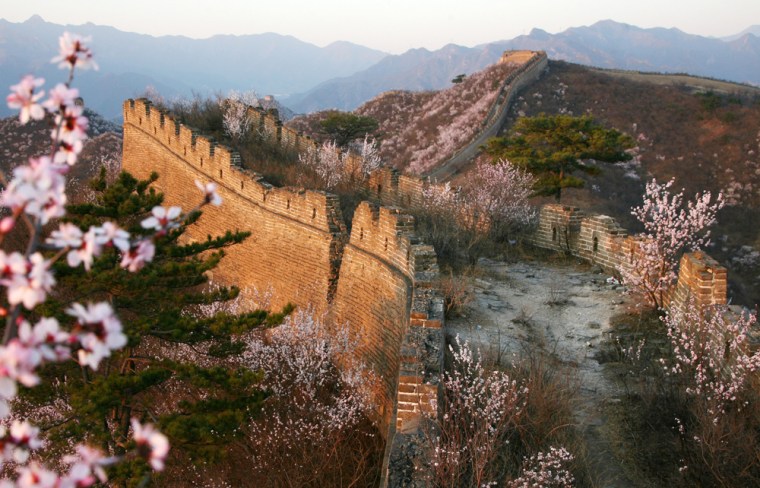China's Great Wall is falling victim to development as legal and illegal mines tear vast chunks out of the hills below the landmark, conservationists are warning.
Voted one of the New Seven Wonders of the World, the 4,000-mile wall snakes its way across 11 Chinese provinces and draws millions of tourists every year, mostly to restored sections near the capital, Beijing.
Away from the tourist trail, however, some parts of the wall are being allowed to crumble away.
About 124 miles southwest of Beijing, in rural Laiyuan county in Hebei province, dozens of small mines are threatening the stability of the centuries-old wall as prospectors dig for copper, iron, molybdenum and nickel, state news agency Xinhua reported.
Some mines have excavated within about 100 yards of the wall.
'Mess'
But since many of these mines have legal permits, there is nothing conservationists can do, said Dong Yaohui, Vice Chairman of the Great Wall Society.
"The exploitation of the mineral resources falls under the jurisdiction of the Land Resources Bureau, so if the bureau issues mining permits to the mining companies, they can legally extract the mineral resources within areas designated in the contract," Dong said.
"But in this process the Land Resources Bureau does not take into consideration the Great Wall as a factor, or consult the opinion of the Department of Cultural Heritage as there is no rule requiring a consultation as such. So this creates the mess in organization."
The Laiyuan Land Resources Bureau blames the destruction on small, illegal mines, and Xinhua quoted them as saying that operators of such mines use sophisticated communication devices to dodge law enforcement.
Each year, the department of Cultural Heritage is given funds to repair damaged segments of the wall, but Dong said it cannot prevent that damage from taking place.
"Money is not the major issue in the protection of the Great Wall. If you just put down a rule requiring that mining cannot take place within a specific distance from the Great Wall, would that cost money?" he said.
"No, it wouldn't cost anything."
Bombed, looted
This is not the first time the Great Wall has come under threat.
Bomb attacks during the Sino-Japanese War, from 1937-1945, destroyed large sections, and residents in surrounding villages looted bricks to build roads and houses in the 1950s and 1960s.
China's State Council issued a ban on vandalism of the Great Wall in 2006, but critics say it has not been enforced in the more remote areas.
Cultural protection experts say that more than 70 percent of the Wall lies in ruins, with just a little over 20 percent of it in good shape, Xinhua said.
In Laiyuan county, residents who previously relied on agriculture have turned their land over to the miners. This is evident in the trucks rumbling along the rural roads, carrying away their excavated spoils.
"Our village is empty, the whole southern area is empty. In the North, they've dug a hole going all the way through to Tielingzi and even 1.5 kilometers (about a mile) beyond that to a place called Geziling," said 60-year-old resident Ding Qingzhong.
Another resident said she disagreed with the idea of making money at the expense of preservation.
"Ancient landmarks should be restored, and at the same time resources should also be extracted," said Tong Zhongrong.
"But don't destroy the ancient landmark just for the sake of mining and for selfish profit. That is wrong."
